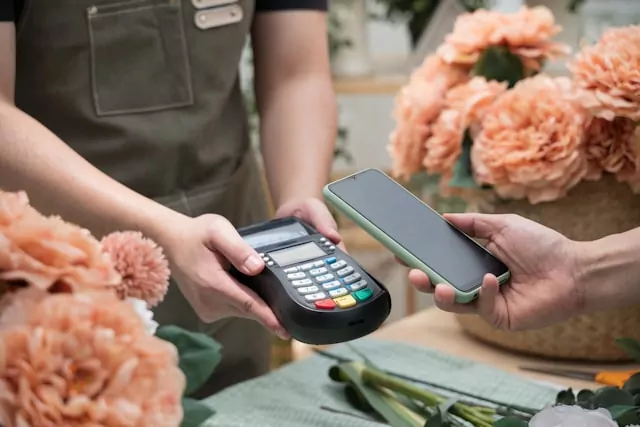Building a successful app can mean big business. But, it also requires a proper plan to reach your target market and stand out against millions of apps already successfully positioned in the market.
There could be many apps available in the market that resemble your app, so it is critical to differentiate your app from your competitors.
You likely already know the challenges your up against, so let’s get right to it and talk about how to face these challenges head on!
What does a successful app look like?
1. A bright and compelling icon
Top apps grab people’s attention with a compelling icon right away. Your app’s icon is one of the first major points a potential customer will see as they debate whether or not to download the app, so making a good icon impression is key to driving a high number of organic downloads.
When approaching your icon design, it’s important to note that the App Store and Google Play vary in their approach to, and rendering of, app icons. Both stores have preset standards for the ideal size, geometry, and color scheme of app icons, designed to match the rest of the OS.
For iOS icons, the most important thing to note is that icons should be sized to at least 1024×1024 pixels, the dimensions required by the App Store. From here, the Apple OS will resize your icon for any other applications, including app icons (180×180), navigation icons (66×66), and tab bar icons (75×75). Your image must therefore be designed with the meticulous detail of a 1024×1024 icon and the simplicity necessary to still look good scaled down to the smallest size.

Additional resources: iOS Design Resources and iOS Icon Sizing Reference Chart
When designing an Android icon, the only difference is that Google Play requires a 512×512 icon, rather than 1024×1024. While not required, Google recommends designing app icons in accordance with its material design guidelines, which details everything from icon anatomy to lighting and shading.

Additional resources: Android Material Design Guidelines and Android Icon Sizing Reference Chart
2. At least a 4-star rating
Jumping from three-star to four-stars has a dramatic impact, increasing conversion by up to 89 percent.

Most telling, ninety percent of consumers consider star ratings to be an essential part of their evaluation of a new app. Seventy-nine percent of consumers check ratings and reviews before downloading an app, fifty-three percent check ratings and reviews before updating an app, and 55 percent check ratings and reviews before making an in-app transaction.
These pieces carry so much influence that it’s now more important than ever for app publishers to make them a priority.
3. Contextual keywords
Once upon a time, keyword stuffing was a great way to rank highly in the app stores. But the app stores caught up to this black-hat tactic, and keyword stuffing is now punished in ASO in the same way SEO keyword stuffing was punished years ago.
As a best practice, it’s important to stay away from keyword stuffing in your app’s title and description, and instead, provide readers with the content that will give them the best experience in deciding whether or not to download your app.
With this in mind, everything consumer-facing in your app’s product page should be designed not for an algorithm but for the customer. If its description is a hodgepodge of contextually irrelevant keywords, that coveted rank will become meaningless, as your wordy description will struggle to entice customers to take the next step and download it.
For best results, write for the customer first, and make small edits for keywords next—remember that the ranking algorithms take both keywords and conversion metrics into account.
4. Dominant keywords in the title
Speaking of keywords, it’s still important to have your dominant keyword in your app’s title if you want to rank highly in the app stores. This may seem like a no-brainer for most, but many app marketers still debate whether or not to include the keyword they’d link to rank highly for in their app’s title. Based on our research, it’s always a good idea to make sure it’s included when optimizing for organic downloads.
In fact, TUNE conducted a study of the top 25 ranking positions and found that apps with a relevant keyword in their title ranked, on average, 10.3% higher than apps without a title keyword. Take a look at what happened when a company they studied added relevant, well-placed keywords to their app’s title:

One last point to note on keywords in your app’s title: To ensure that your app can be clearly identified, keep the actual name short and sweet. You can augment this short title with nonessential keywords after the name, typically preceded by a dash or vertical bar, to associate your app with select keywords.
5. High download and MAU count
This tip is relatively simple to understand: If more people are downloading and using your app regularly, you’re going to rank higher in the app stores.
Downloads are the number of people who have downloaded and installed your app on their device.The most accurate way to track downloads is directly from the app stores. Based on our recent research, 95% of the top 100 Android apps have over 1M installs, giving them the advantage they need to rank highly.
While downloads alone don’t paint the whole picture of success, they sure do help. Measure this metric directly from the app stores. Third-party tools like Data.ai and AppFigures can help you crawl the app stores to get the most accurate download data.
Usage is also a huge trust signal that the app stores take into consideration in the top charts. Monthly active users (MAU) counts the number of unique users over the course of a month. To calculate, count the number of unique users during the previous 30 days to understand how many users have been active in your product.
6. Updated regularly
Top apps are updated regularly, with many being updated at least once a month in order to provide customers with new content, features, promotions, experiences, and more. Keeping your app’s content fresh is also a great way to re-engage users and drive retention, which is important to keep in mind as you plan your app’s update schedule for the upcoming months.
To come up with a general recommendation for update frequency, we scoured the 500 top-ranked apps and found that the average update frequency was between 30 and 40 days. Keep in mind, however, that each time you update an iOS app, your ratings reset — and with that, your rank temporarily plummets.
As a result, frequently updated iOS apps experience slightly higher app store rank volatility, while frequently updated Android apps experience reduced volatility.
Of course, releasing the update is only half the battle. The next step is to encourage existing customers to download the update. To help sell your next update, try these three strategies:
- Entice customers within your app (such as a note prompted at login, a push notification, or an update link prominently displayed in the main navigation) notifying them of the new update and what improvements they have to look forward to.
- Update the app description and the “What’s New” field in your app store product page to outline new/improved features with a compelling call-to-action.
- Maintain a large volume of five-star reviews for your app, and especially its latest version. 79 percent of customers check ratings and reviews before downloading a new app. Maintain a positive rating for an easy win!
Designing a successful app
Less is more
When designing mobile apps, it’s important to think hard and “focus on the core tasks” that customers wants to perform and strip the rest away. One must always ask, “How do you make it as simple and straightforward as possible?”
For app designers this is much easier said than done. Let’s say you have an app that does five things and you need to simplify. How do you decide what customers wants and don’t want? Good decisions require profiling your target customers into personas, getting to know these personas, and discovering what their core tasks might be.
This type of research involves a lot of creative thinking and experimentation, which starts with prototyping. A prototype is not a full functioning app but a mockup that simulates the user flow. When the prototype is ready, you can start user testing that takes a series of users through the flow, watches them use the app, sees where they get stuck, and records their comments.
User Interface and Customer Experience
Anybody can build an app, and many do, but few have the patience and expertise to perfect their inventions. This type of focus is something we see continually at Apple. It is worth reminding the audience that Apple invented the idea of the smartphone app and set the tone with simplicity. This is what made the iPhone so popular.
These days the focus in mobile app development is rightfully on customer experience. This gets at how the customers feels while using your app and has everything to do with how the app looks, behaves, and functions. .
In summary, a good app customer experience can be created by knowing your target audience well, thinking hard about their core task, and then stripping away the non-essentials. User testing and A/B testing can then be used to refine the design.
Wrapping it up
By understanding the tactics behind what makes the top apps rank highly, you’re able to improve pieces of your app that will help you win in the app stores. Each tactic we covered might not make sense for every app, but for most apps across all categories, there is room for improvement in all areas.
If you want to see how Apptentive can help you win in the app store, request a product demo!
See you at the top of the charts!





















Discussion about this post